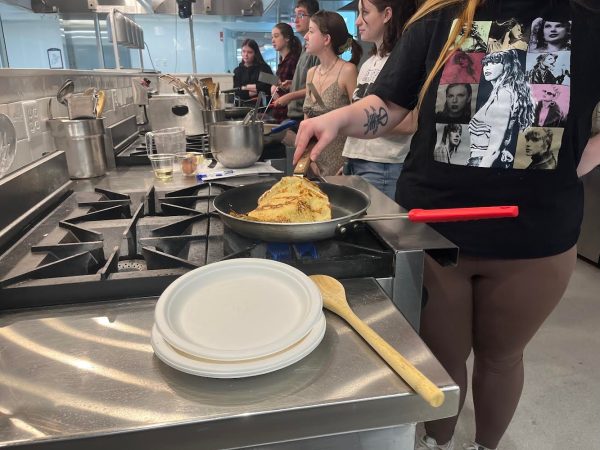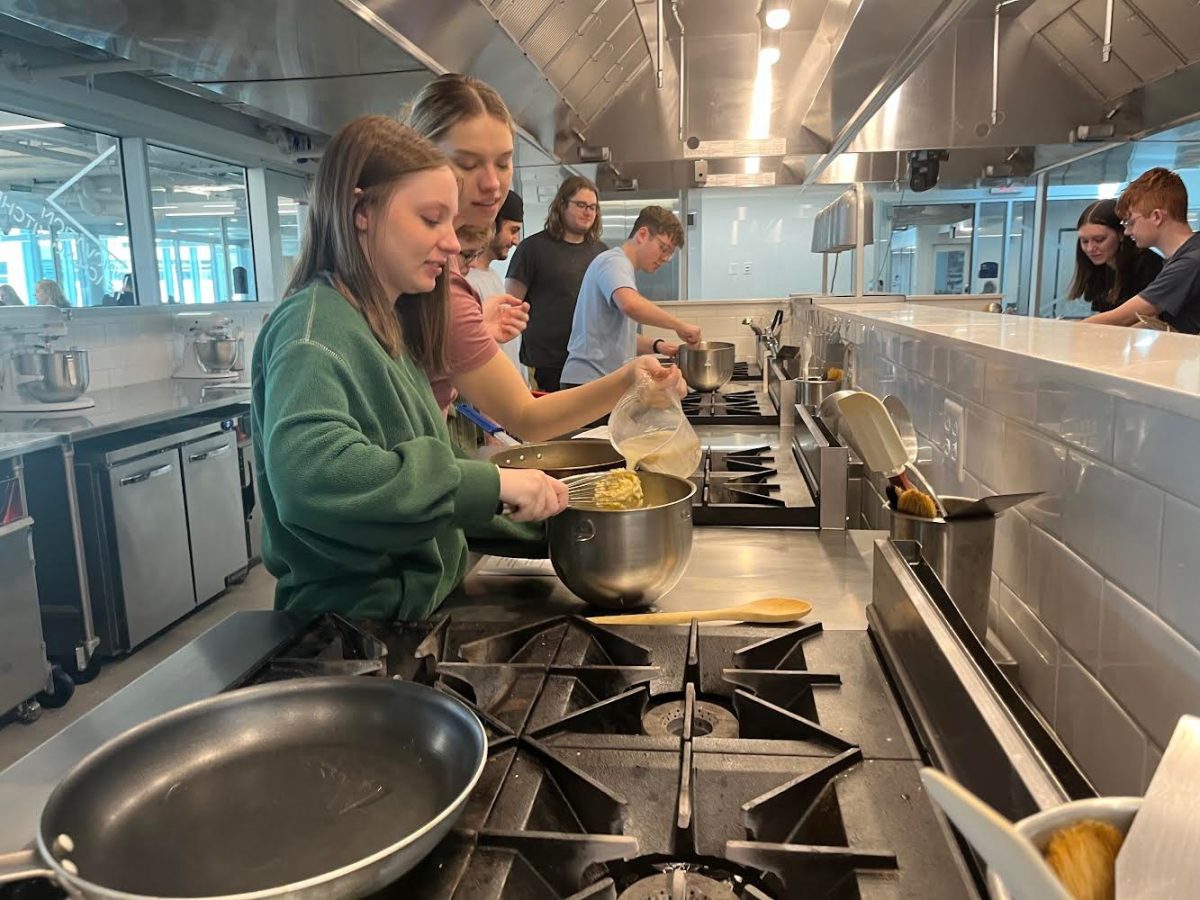The stove sizzled as students were instructed in French how to carefully flip their crêpes from the pan onto their plates to prevent the light, crisp treat from cracking.
Charlotte Dagorno, a graduate translation student and professor of Elementary French II, said she and Aurélien Riclet, a French professor, had the idea to teach Elementary French II students to make crêpes on March 4 because of the dish’s importance from their home region, Brittany, France.
Elementary French II is a continuation of Elementary French I, which is an introductory course to French and French culture.
“It’s something [Dagorno and Riclet] eat a lot. We’re raised with that kind of food,” Dagorno said. “We figured it’s easy enough to make and how about we try a nice, fun session for students to get an actual idea of what it means to speak a language.”
The reason it was important for the students to practice using French in the Design Innovation Teaching Kitchen is because in the classroom students can be more timid to participate, she said.
The lesson also coincided with the classes’ previous unit which focused on food and how to discuss food in French, Riclet said.
“[Dagorno and Riclet] thought it would be a good opportunity to practice what we just learned with a fun activity,” he said.

Cashyra Walker, a junior psychology major, said the class’s crêpe cooking lesson and previous course chapter were beneficial.
“We learned how to ask for things like if you go out to eat, and we learned some of the ingredients you would use to prepare foods,” Walker said.
Ryanne Bunting, a sophomore international studies major, said the lesson was a nice way to end the course’s chapter as she enjoyed her Nutella and strawberry jam crêpe. After the students were finished making their crêpes, they had the option to customize them with different jams and Nutella.
“[The crêpe] was really yummy. They were very, very good,” Bunting said.
During the cooking lesson, students were tasked with making the dough for the crêpes and flipping them while they were cooking on the stove. Dagorno said she enjoyed watching the students as she was surprised by the students’ French abilities.
“I’m very surprised at how proficient they were in French, how much they understood which also tells me that it was a good idea, this activity,” she said.
Walker said it was not too difficult to make the crêpes but rather simple because of how easy the recipe was to follow.
Both Riclet and Dagorno are hoping to provide students with these interactive learning activities more often to help them further their French skills, Riclet said.
“A cooking class or something else… just something cultural to motivate them to learn French and to travel and discover new things,” he said.
Riclet said he hoped students take away from the lesson the motivation to travel to new places like Bretagne and to discover new foods.
“Maybe [students] will want to travel to Brittany or to France and try a crêpe from there,” he said. “We want them to be motivated to tour and discover something else.”
Adriana Gasiewski is a beat reporter. Contact her at [email protected].





